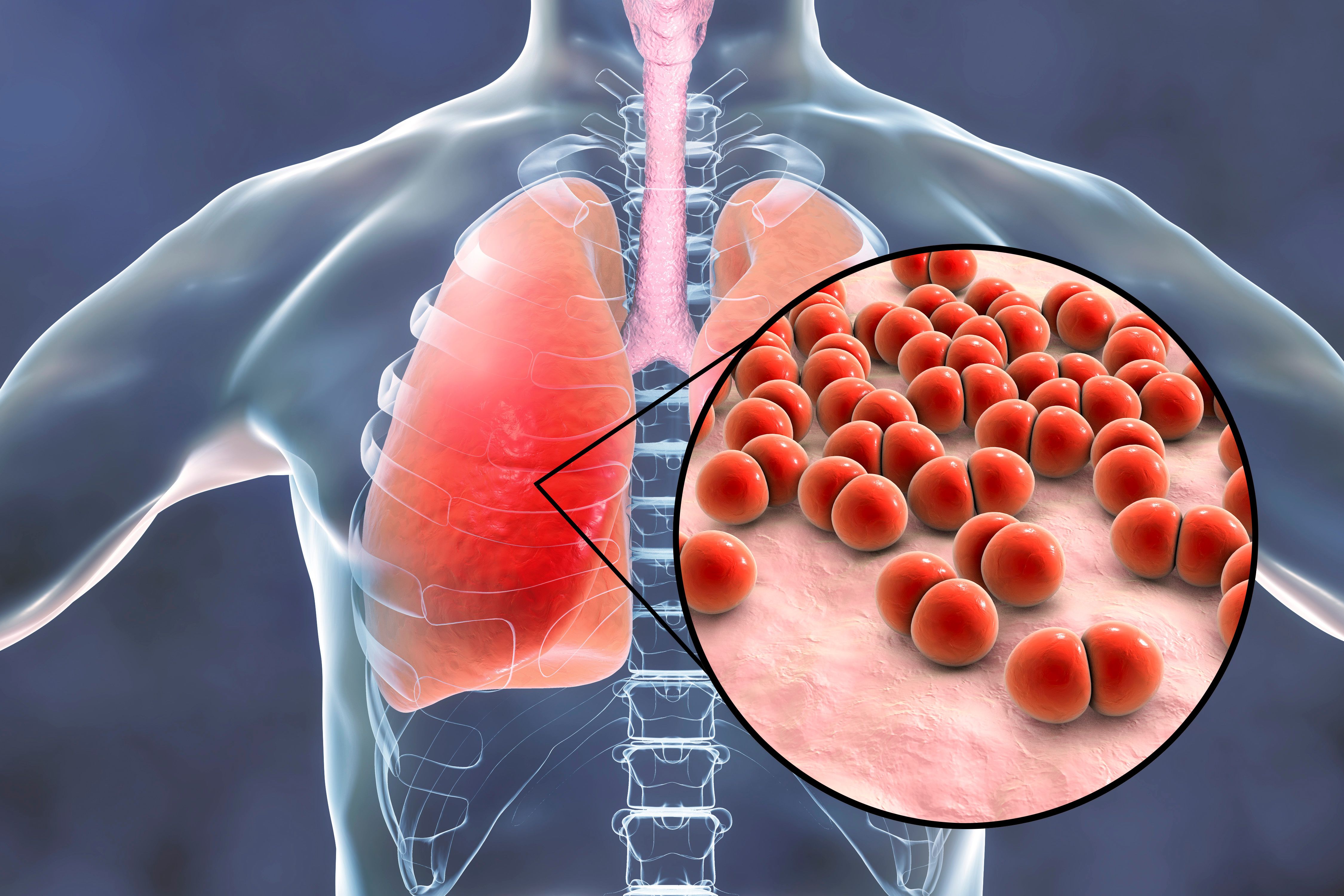Article
Multi-Comorbidity, Respiratory Disease Among Highest-Risk Conditions for Pneumococcal Pneumonia
Author(s):
Immunocompromised status still appears to be one of the highest independent risk factors for pneumococcal pneumonia in middle-aged and older adults.
History of invasive pneumococcal disease (IPD) or all-cause pneumonia may be associated with risk of contracting pneumococcal pneumonia (PP), one of the biggest health concerns worldwide, according to the results of research from Spain that were recently published in BMC Pulmonary Medicine. Other high-risk factors include older age (age 80 and older), pulmonary/respiratory disease, and having 2 or more risk conditions.
Credit: Dr_Microbe - stock.adobe.com

“The vast majority (75.9%) of PP cases occurred among those cohort members with one or more underlying risk condition,” the study authors wrote in the article.
Streptococcus Pneumoniae causes IPD and PP infections, which largely contribute to morbidity and mortality worldwide. Certain conditions (being immunocompromised or having heart disease), behaviors (alcoholism; smoking), and low socioeconomic status are documented risk factors for IPD.
However, data about risk factors for PP are still limited. Data about the effects of multi-comorbidities on risk of IPD or PP are also seriously limited, therefore, investigators sought to gain insight about the risk of underlying medical conditions and comorbidities on the risk of developing PP.
Between 2017 and 2018, a population-based retrospective cohort study was conducted in Catalonia, Spain. The study included 2,059,645 people aged 50 years and older who had varying degrees of risk conditions; 668,608 (32.5%) participants had 1 comorbidity (risk condition), 244,543 (11.9%) had 2 comorbidities, 70,688 (3.4%) had 3 comorbidities, 16,851 (0.8%) had 4 comorbidities and 3749 (0.2%) had 5 or more.
Upon analysis, hospitalizations from PP among middle-aged and older adults were moderate. The global IR was 90.7 hospitalizations per 100,000 person-years and the case-fatality rate is 7.6%.
Incidence rate (IR) of PP also appeared to be higher among certain patient populations:
- Elderly individuals aged 80 years or older.
- People infected and hospitalized from IPD or all-cause pneumonia in the past 2 years.
- Patients with immunocompromising conditions.
- Patients with chronic pulmonary or respiratory disease.
- Patients with 2 or more risk conditions.
Approximately 10% of the cohort had an immunocompromising condition, yet they accounted for nearly one-quarter of total PP cases. Further, a higher number of comorbidities was associated with increased risk of PP.
In the analysis, a person’s risk of PP was 1.76 times higher with 1 comorbidity, 3.10 times higher with 2 comorbidities, 4.66 times higher with 3 comorbidities, 7.07 times higher with 4 comorbidities, and 8.70 with 5 comorbidities.
“Our data underlines the capital role of multiple concurrent underlying risk conditions on the risk of suffering pneumonia,” the study authors wrote in the article.
Some risk conditions were more heavily associated with risk of PP. Adjusted risk of PP was 6.8 times higher in those with HIV-infection, 2.7 times higher among patients with hematological neoplasia, and 2.7 times higher for chronic pulmonary/respiratory disease. In fact, 32.5% of patients with pulmonary/respiratory disease got PP.
Other risk conditions associated with risk of PP included being of male sex, having a solid cancer, renal disease, liver disease, heart disease, or diabetes mellitus, and smoking.
Investigators may have underestimated the risk of smoking on risk of PP. Other limitations include underestimating the role of vaccines to prevent PP, the definition of PP, and the assumption that hospital discharge information was accurate.
Authors wrote that “redefining risk categories for PP… could be necessary to improve prevention strategies in middle-aged and older adults.”
Reference
Ochoa-Gondar O, Torras-Vives V, Diego-Cabanes C, et al. Incidence and risk factors of pneumococcal pneumonia in adults: a population-based study. BMC Pulm Med 23, 200 (2023). Doi: 10.1186/s12890-023-02497-2
Newsletter
Stay informed on drug updates, treatment guidelines, and pharmacy practice trends—subscribe to Pharmacy Times for weekly clinical insights.






